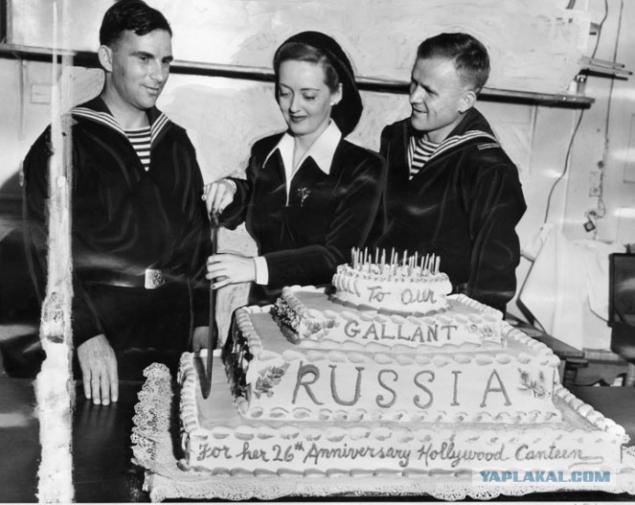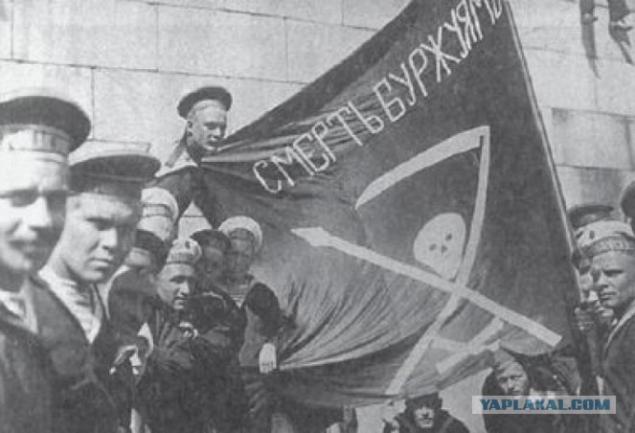744
7 major mysteries vest.
August 19 wolves of the sea celebrate the birthday of Russian vest. On this day in 1874 striped sweatshirt high imperial decree received the official status of the Russian sailor ammunition. It's time to reveal the mysteries of the major "sea soul».
To begin with a small prologue. Before that you have read something about the origin of vests, then consider the time you lost. What is written in Russian, is flawed compilation compilation. Today, at an informal birthday Russian vest, you have the happy opportunity to learn something about this element of the "sea" of clothes, if you, of course, is why do you need something.
Will 8 photos. Author: Alex Pleshanov. Taken here

Now actually the prologue itself. Any person is the blood of the flesh of the son of their land. The support of its language, culture, stereotypes, misconceptions and stupidity. But one day this to the bone terrestrial beings, "landlubber" existential "root vegetables" get a chance to go to the open sea. Gravity decreases turnip pulled and "root" is dying, but instead is born the one called "Rolling Stone", "tear off so throw»,
Marine culture - is the first experience of globalization. The sailors all over the world do not care about the flags, the state borders on religion. All land loses value to them as soon as they pereboryut seasickness and cross the equator. After that, they know that life in which you feel under your feet firm flesh, is an illusion, snag, bullshit. The truth, the true reality of going to sea, where it is not visible off the coast. Instead, last toddle on alumina, a person acquires a floating, soft tread, which betrays a slight disdain for everything that is harder than the deck boards and that absorbs a nifty sound of heels.
Seafarers - it aliens on our planet, a global alternative to the "soil being" anti-system for "earthen order." It was in such a culture could be born a strange and at the same time very deep within the meaning of the cult of the things that the Western world calls breton shirt (Breton shirt), and we, Russian - 'vest ».
1. Why is it striped?
Each cabin boy until recently knew that inhabit the sea are not only fish and aquatic reptiles, and spirits. Many spirits! To establish normal contact with them, find common ground - is the key not only safe swimming, but also the guarantor of life sailor. Mother fate reigns in the sea directly, without intermediaries in the form of "common sense." In this regard, the main task of any person who is on the high seas - not to provoke the fate on famously. For thousands of years, this goal has formed around it a whole system of knowledge, true science, which are dependent on terra firma people casually refer to maritime superstition.
The sailors do not like to check the axioms using personal experience. His alien experiments physicists and lyricists careless curiosity. All he has to do is to strictly follow the tradition, for a drowned difficult to learn from their mistakes.
Do not take a woman on a ship, do not whistle, do not kill seagulls swimming after crossing the equator; earring, so as not to drown, tattoo, not to become a ghost after death - all bear a specific meaning, which is adjacent to the functionality of mysticism, protective magic.
For centuries Breton fishermen going to sea, put on the striped (black and white) robe. It was believed that Rob protects them against aggression undines, mermaids and other vermin. Perhaps Breton vest submarine played the role of camouflage that protects from the view of sea devils. And maybe alternating horizontal bands attributed to Breton fishermen another function, one thing is for sure, a striped shirt playing the role of a talisman.
In the period of great geographical discoveries, when the world was a shortage of manpower, many Breton fishermen joined the European fleet. But most of the Bretons, if not strange, appeared on the Dutch, not French ships. Maybe because there are paid well, maybe because the Bretons are not very fond of the French usurpers, and, perhaps, the liberal nature of Dutch is not forbidden to wear their cause Bretons striped outfits. This was the beginning of the XVII century; vest by the end of the century will be the world fashion-trend for all European seafarers.

2.Skolko stripes on the vest?
Of course, you can count the stripes on the corny vest of the same commando, but here we will be disappointed. In Russia, since the Soviet period, the number of stripes on the vests depends on the size of a particular sailor, marine mud border guard. Generally speaking, on the 46th of the amount will be 33, and on the 56th - 52. numerological perspective vest could put a brake on, if it was not certain that the numerical symbolism in "Breton shirt" still exists. For example, adopted by the French navy in 1852, the standard vest should be 21 streak - the number of the great victories of Napoleon. However, this version for "landlubber". 21 - the number of success, good luck in the cult card game sailors Vingt-et-un (aka - "Blackjack", aka "Point"). Numerological component to the number of lanes was in Dutch and English. So, in the middle of the XVII century the ship's crew, engaged by the Dutch East India Company, preferred "Breton sweater" with twelve horizontal stripes - the number of ribs in humans. Thus, as explained by some experts maritime tradition, sailors dashing cheated fate, showing that they have already died and became ghost skeletons.

3. How breton shirt was "vest»
For the first time Russian people saw vest most likely in the second half of the XVII century, when the Arkhangelsk and Kholmogory got into the habit of Dutch merchant ships. Sea Wolves from the Netherlands, along with the British, were the main trendsetters in the field of marine ammunition. It is no coincidence Peter I fully adopted for the nascent Russian Navy Dutch naval uniform. However, without the "Breton shirts". The last fragments appeared in Russia in the 40-50-ies of the XIX century: vests sported merchant seamen, exchanged or bought them in any European port.
There is a bike that in 1868 the Grand Duke and Admiral Konstantin Nikolayevich Romanov took the crew of the frigate "General Admiral." At the meeting all the sailors came in striped shirts, bought them in Europe. Sea Wolves as they praised the functionality and convenience of striped sweatshirts that a few years later, in 1874, the prince brought the emperor to sign a decree formally incorporating into the marine ammunition vest.
Russian sailors in New York, 1850. Even without vests

4. How was born, "the soul of the sea»?
However, the cult of the vest became a little later. After the Russian-Japanese war demobilized Russian sailors filled the city. They reminded residents of the Bronx in New York, but instead of hip-hop dances they danced, like "apple", talked about how fighting for Port Arthur, and seek adventure on his head. The main attribute of the dashing sailor, "soul wide open," was the vest, which was at that time began to be called "sea soul." It was at this time was the first mass introduction of "sea of the soul" with the Russian collective showers. The connection is "two lonely souls", which took place in 1917, gave a mixture that exploded Russia. The Bolsheviks, who actively used the sailors in his seizure of power as a natural anti-system to any "land" to the order in 1921, suppressed the Kronstadt rebellion, finally rid themselves of unwanted reflection, the "sea of the soul».

5. Why vest paratrooper?
Vest has always been associated with the water element, but not with the air. How and why the parachutist in the blue beret got vest? Unofficially, in the locker room paratroopers "Breton shirt" appeared in 1959. Then they began to serve for a parachute jump into the water. However, it is unlikely this minor tradition could grow into a "striped" cult, which eventually appeared in the Airborne. The main cultivator de Vest in the Airborne was the legendary commander of the Airborne Troops Vasily Margelov. It was through his boisterous enthusiasm striped sweatshirt officially entered the commando wardrobe essentials.
Abduction of the "sea of the soul" "parachutists" strongly resisted the Commander in Chief of the USSR Navy, Sergei Gorshkov. One day, according to legend, at one meeting, he entered into an open skirmish with Vasily Margelov, calling the phenomenon a paratrooper in the vest unpleasant word "anachronism." Vasily Filippovich then tightly reined old sea wolf, "I fought in the Marines, and I know that they deserve paratroopers, and that - no!»
The official premiere of vests with blue stripes came in Prague events of August 1968, it was the Soviet paratroopers in striped jerseys played a decisive role in ending the Prague Spring. At the same time, and the debut of the famous blue berets. Few people know that the new look of paratroopers was not prescribed by any official document. Baptism of fire, they received free will "patriarch" Airborne - without any unnecessary red tape. Knowledgeable people who know how to read between the lines to see in Prague fashion-show of Soviet paratroopers hidden challenge Airborne commander in chief of the Navy. The fact that Margelov led not only to the sailors vest, but takes.
The official premiere Berets was set for November 7, 1968 - parade on Red Square. But the main thing - Berets had to be black and the crown of the head subordinate to the Navy Marines. The right of the first night of the Navy received a special order of the Ministry of Defense of the USSR № 248 of November 5, 1963. But five years of careful preparation went down the drain because of the pirate fashion-raid "Landing Forces", which then a formal law was not on wearing a beret, nor vest. The legitimacy of the new outfit paratroopers received almost a year after the events in Prague thanks to the Order of the USSR Ministry of Defense number 191 of 26 July 1969 which introduced another rule wearing military uniforms. Who would dare to ban Airborne soldiers wearing vest and take after they are actually single-handedly extended the life of "developed socialism" in Eastern Europe.
The roots of passion Basil Povich attributes Navy spiteful critics have seen a desire to annoy the opponent of the Navy and the jealousy of the Marines, where he served during the war Margelov. Hopefully, the commander of the Airborne Troops were more serious reasons - for example, the belief in super-strength vest, understanding "striped" of the soul, which he learned when he fought side by side with the "kleshёnymi" sailors during the war.
There is a very amusing hypothesis that the passion for the horizontal band at the main paratrooper was born on the wave of popularity among the Soviet military elite British film 'This Sporting Life "(English. This Sporting Life). This depressing drama tells the story of the harsh world of the English rugby players. The picture, released in 1963, by some mysterious reason, has become a cult among military commanders. Many military commanders lobbied for the creation of subordinate rugby teams. And Vasily Filippovich general ordered introduce rugby in the training of paratroopers.
The film is hardly spectacular; episodes where play rugby is not very much, so to form an opinion about the intricacies of the game is very difficult. I think the main Margelov made an impression on one of the most brutal moments picture when the protagonist gets a deliberate injury of a player of the opposing team. Players This team is dressed in a striped shape that resembles a vest.
Vest Airborne premiere in Prague in 1968

6. "We are few, but we vests»
This is not bravado. Horizontal stripes creating an optical effect more than it actually is. Interestingly, the Soviet sailors and marines who participated in the battles on the ground during the Second World War, the Germans called "striped devils." This epithet is connected not only with the shocking fighting qualities of our soldiers, but also with Western European archetypal consciousness. In Europe, striped clothing for centuries been the lot of the "damned": it had to wear professional executioners, heretics, lepers and other outcasts of society who do not have the rights of the citizen. Of course, the phenomenon of Soviet sailors vests in the "land" at the situation unprepared German infantry caused primal fear.
"Striped devils." Marines in the World

7. What are all these colored stripes?
Today, virtually every branch of service in Russia has its own unique vest with stripes of color. T-shirts with black bars are marines and divers, with light green - border guards, with maroon - spentsazovtsy Interior Ministry troops, with cornflower - the soldiers of the Presidential Regiment and Special Forces of the FSB, with orange - Emergency Situations Ministry, etc.
Criteria for choosing a particular color-specific native troops, probably a military secret. While it would be very curious to know why, for example, special forces of the FSB flaunt vests with cornflower-blue stripes. But it will take time, and the secret will be revealed anyway.
Posted in [mergetime] 1376926737 [/ mergetime]
All you can kick.

Source:
To begin with a small prologue. Before that you have read something about the origin of vests, then consider the time you lost. What is written in Russian, is flawed compilation compilation. Today, at an informal birthday Russian vest, you have the happy opportunity to learn something about this element of the "sea" of clothes, if you, of course, is why do you need something.
Will 8 photos. Author: Alex Pleshanov. Taken here

Now actually the prologue itself. Any person is the blood of the flesh of the son of their land. The support of its language, culture, stereotypes, misconceptions and stupidity. But one day this to the bone terrestrial beings, "landlubber" existential "root vegetables" get a chance to go to the open sea. Gravity decreases turnip pulled and "root" is dying, but instead is born the one called "Rolling Stone", "tear off so throw»,
Marine culture - is the first experience of globalization. The sailors all over the world do not care about the flags, the state borders on religion. All land loses value to them as soon as they pereboryut seasickness and cross the equator. After that, they know that life in which you feel under your feet firm flesh, is an illusion, snag, bullshit. The truth, the true reality of going to sea, where it is not visible off the coast. Instead, last toddle on alumina, a person acquires a floating, soft tread, which betrays a slight disdain for everything that is harder than the deck boards and that absorbs a nifty sound of heels.
Seafarers - it aliens on our planet, a global alternative to the "soil being" anti-system for "earthen order." It was in such a culture could be born a strange and at the same time very deep within the meaning of the cult of the things that the Western world calls breton shirt (Breton shirt), and we, Russian - 'vest ».
1. Why is it striped?
Each cabin boy until recently knew that inhabit the sea are not only fish and aquatic reptiles, and spirits. Many spirits! To establish normal contact with them, find common ground - is the key not only safe swimming, but also the guarantor of life sailor. Mother fate reigns in the sea directly, without intermediaries in the form of "common sense." In this regard, the main task of any person who is on the high seas - not to provoke the fate on famously. For thousands of years, this goal has formed around it a whole system of knowledge, true science, which are dependent on terra firma people casually refer to maritime superstition.
The sailors do not like to check the axioms using personal experience. His alien experiments physicists and lyricists careless curiosity. All he has to do is to strictly follow the tradition, for a drowned difficult to learn from their mistakes.
Do not take a woman on a ship, do not whistle, do not kill seagulls swimming after crossing the equator; earring, so as not to drown, tattoo, not to become a ghost after death - all bear a specific meaning, which is adjacent to the functionality of mysticism, protective magic.
For centuries Breton fishermen going to sea, put on the striped (black and white) robe. It was believed that Rob protects them against aggression undines, mermaids and other vermin. Perhaps Breton vest submarine played the role of camouflage that protects from the view of sea devils. And maybe alternating horizontal bands attributed to Breton fishermen another function, one thing is for sure, a striped shirt playing the role of a talisman.
In the period of great geographical discoveries, when the world was a shortage of manpower, many Breton fishermen joined the European fleet. But most of the Bretons, if not strange, appeared on the Dutch, not French ships. Maybe because there are paid well, maybe because the Bretons are not very fond of the French usurpers, and, perhaps, the liberal nature of Dutch is not forbidden to wear their cause Bretons striped outfits. This was the beginning of the XVII century; vest by the end of the century will be the world fashion-trend for all European seafarers.

2.Skolko stripes on the vest?
Of course, you can count the stripes on the corny vest of the same commando, but here we will be disappointed. In Russia, since the Soviet period, the number of stripes on the vests depends on the size of a particular sailor, marine mud border guard. Generally speaking, on the 46th of the amount will be 33, and on the 56th - 52. numerological perspective vest could put a brake on, if it was not certain that the numerical symbolism in "Breton shirt" still exists. For example, adopted by the French navy in 1852, the standard vest should be 21 streak - the number of the great victories of Napoleon. However, this version for "landlubber". 21 - the number of success, good luck in the cult card game sailors Vingt-et-un (aka - "Blackjack", aka "Point"). Numerological component to the number of lanes was in Dutch and English. So, in the middle of the XVII century the ship's crew, engaged by the Dutch East India Company, preferred "Breton sweater" with twelve horizontal stripes - the number of ribs in humans. Thus, as explained by some experts maritime tradition, sailors dashing cheated fate, showing that they have already died and became ghost skeletons.

3. How breton shirt was "vest»
For the first time Russian people saw vest most likely in the second half of the XVII century, when the Arkhangelsk and Kholmogory got into the habit of Dutch merchant ships. Sea Wolves from the Netherlands, along with the British, were the main trendsetters in the field of marine ammunition. It is no coincidence Peter I fully adopted for the nascent Russian Navy Dutch naval uniform. However, without the "Breton shirts". The last fragments appeared in Russia in the 40-50-ies of the XIX century: vests sported merchant seamen, exchanged or bought them in any European port.
There is a bike that in 1868 the Grand Duke and Admiral Konstantin Nikolayevich Romanov took the crew of the frigate "General Admiral." At the meeting all the sailors came in striped shirts, bought them in Europe. Sea Wolves as they praised the functionality and convenience of striped sweatshirts that a few years later, in 1874, the prince brought the emperor to sign a decree formally incorporating into the marine ammunition vest.
Russian sailors in New York, 1850. Even without vests

4. How was born, "the soul of the sea»?
However, the cult of the vest became a little later. After the Russian-Japanese war demobilized Russian sailors filled the city. They reminded residents of the Bronx in New York, but instead of hip-hop dances they danced, like "apple", talked about how fighting for Port Arthur, and seek adventure on his head. The main attribute of the dashing sailor, "soul wide open," was the vest, which was at that time began to be called "sea soul." It was at this time was the first mass introduction of "sea of the soul" with the Russian collective showers. The connection is "two lonely souls", which took place in 1917, gave a mixture that exploded Russia. The Bolsheviks, who actively used the sailors in his seizure of power as a natural anti-system to any "land" to the order in 1921, suppressed the Kronstadt rebellion, finally rid themselves of unwanted reflection, the "sea of the soul».

5. Why vest paratrooper?
Vest has always been associated with the water element, but not with the air. How and why the parachutist in the blue beret got vest? Unofficially, in the locker room paratroopers "Breton shirt" appeared in 1959. Then they began to serve for a parachute jump into the water. However, it is unlikely this minor tradition could grow into a "striped" cult, which eventually appeared in the Airborne. The main cultivator de Vest in the Airborne was the legendary commander of the Airborne Troops Vasily Margelov. It was through his boisterous enthusiasm striped sweatshirt officially entered the commando wardrobe essentials.
Abduction of the "sea of the soul" "parachutists" strongly resisted the Commander in Chief of the USSR Navy, Sergei Gorshkov. One day, according to legend, at one meeting, he entered into an open skirmish with Vasily Margelov, calling the phenomenon a paratrooper in the vest unpleasant word "anachronism." Vasily Filippovich then tightly reined old sea wolf, "I fought in the Marines, and I know that they deserve paratroopers, and that - no!»
The official premiere of vests with blue stripes came in Prague events of August 1968, it was the Soviet paratroopers in striped jerseys played a decisive role in ending the Prague Spring. At the same time, and the debut of the famous blue berets. Few people know that the new look of paratroopers was not prescribed by any official document. Baptism of fire, they received free will "patriarch" Airborne - without any unnecessary red tape. Knowledgeable people who know how to read between the lines to see in Prague fashion-show of Soviet paratroopers hidden challenge Airborne commander in chief of the Navy. The fact that Margelov led not only to the sailors vest, but takes.
The official premiere Berets was set for November 7, 1968 - parade on Red Square. But the main thing - Berets had to be black and the crown of the head subordinate to the Navy Marines. The right of the first night of the Navy received a special order of the Ministry of Defense of the USSR № 248 of November 5, 1963. But five years of careful preparation went down the drain because of the pirate fashion-raid "Landing Forces", which then a formal law was not on wearing a beret, nor vest. The legitimacy of the new outfit paratroopers received almost a year after the events in Prague thanks to the Order of the USSR Ministry of Defense number 191 of 26 July 1969 which introduced another rule wearing military uniforms. Who would dare to ban Airborne soldiers wearing vest and take after they are actually single-handedly extended the life of "developed socialism" in Eastern Europe.
The roots of passion Basil Povich attributes Navy spiteful critics have seen a desire to annoy the opponent of the Navy and the jealousy of the Marines, where he served during the war Margelov. Hopefully, the commander of the Airborne Troops were more serious reasons - for example, the belief in super-strength vest, understanding "striped" of the soul, which he learned when he fought side by side with the "kleshёnymi" sailors during the war.
There is a very amusing hypothesis that the passion for the horizontal band at the main paratrooper was born on the wave of popularity among the Soviet military elite British film 'This Sporting Life "(English. This Sporting Life). This depressing drama tells the story of the harsh world of the English rugby players. The picture, released in 1963, by some mysterious reason, has become a cult among military commanders. Many military commanders lobbied for the creation of subordinate rugby teams. And Vasily Filippovich general ordered introduce rugby in the training of paratroopers.
The film is hardly spectacular; episodes where play rugby is not very much, so to form an opinion about the intricacies of the game is very difficult. I think the main Margelov made an impression on one of the most brutal moments picture when the protagonist gets a deliberate injury of a player of the opposing team. Players This team is dressed in a striped shape that resembles a vest.
Vest Airborne premiere in Prague in 1968

6. "We are few, but we vests»
This is not bravado. Horizontal stripes creating an optical effect more than it actually is. Interestingly, the Soviet sailors and marines who participated in the battles on the ground during the Second World War, the Germans called "striped devils." This epithet is connected not only with the shocking fighting qualities of our soldiers, but also with Western European archetypal consciousness. In Europe, striped clothing for centuries been the lot of the "damned": it had to wear professional executioners, heretics, lepers and other outcasts of society who do not have the rights of the citizen. Of course, the phenomenon of Soviet sailors vests in the "land" at the situation unprepared German infantry caused primal fear.
"Striped devils." Marines in the World

7. What are all these colored stripes?
Today, virtually every branch of service in Russia has its own unique vest with stripes of color. T-shirts with black bars are marines and divers, with light green - border guards, with maroon - spentsazovtsy Interior Ministry troops, with cornflower - the soldiers of the Presidential Regiment and Special Forces of the FSB, with orange - Emergency Situations Ministry, etc.
Criteria for choosing a particular color-specific native troops, probably a military secret. While it would be very curious to know why, for example, special forces of the FSB flaunt vests with cornflower-blue stripes. But it will take time, and the secret will be revealed anyway.
Posted in [mergetime] 1376926737 [/ mergetime]
All you can kick.

Source:























